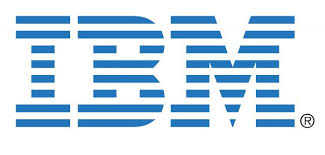Enhancing Nanotechnology's Potential to Improve Clean Water Access
According to the World Health Organization, over a million people die every year from diseases caused by unclean water. With population growth and climate change, the problem is expected to get worse. Our team has discovered a phenomenon which could form an important step towards making clean water available to those who need it most. Existing water purification technologies are often expensive, and the people who need
them most are least able to afford them. The Computing for Clean Water project that ran on World Community Grid can help change that status quo. The project’s exciting findings were just published in Nature Nanotechnology, the world’s most prestigious nanotechnology journal.
Fudamentally, our discovery is about how we can potentially use carbon nanotubes to make water filters that are more efficient and less expensive. Carbon nanotubes are tiny, hollow structures made of a material related to graphite in pencils with diameters of just a few nanometers — one ten-thousandth the diameter of a human hair. The size of the tubes allows water molecules to pass through, but blocks larger pathogens and contaminants, purifying the water.
Experiments show that nanotubes do indeed make good filters, so there is much interest in optimizing their filtration properties. But due to lack of sufficient computing power, until now there had been a wide gap between what scientists could understand and predict from computer simulations, and what they could actually measure in experiments.
Our research efforts focused on bridging this gap. By running massive computer simulations on World Community Grid, we discovered that certain kinds of natural vibrations, under specific conditions, can lead to a 300%+ increased rate of diffusion (a kind of flow) of water through carbon nanotubes, compared to previous theoretical predictions.
What does this discovery mean for future research? If experiments confirm our predictions, the immediate application is in designing more efficient water filters. Our predictions may also lead to a less expensive method for desalinating water (the process of obtaining fresh water from sea water).
Utilizing this nanoscale phenomenon, it may be possible to construct membranes and filters that can enhance many processes that involve water or other fluids. For instance, this may lead to new insights on how chemicals and medicines are transported through tiny channels in living cells. With further research, it might also be possible to apply these findings to improve a process that creates clean energy when freshwater and saltwater are mixed, a process known as osmotic power.
These diverse possibilities are only imaginable because of the generosity of World Community Grid volunteers who donated their devices’ spare computing time. By partnering with World Community Grid and the 150,000 volunteers who participated in this project, we were able to simulate water flow at a level of detail never attempted before, which revealed a phenomenon that had not been detected in previous studies.
Members of the Computing for Clean Water research team at Tsinghua University (from left to right): Zhiping Xu, Ming Ma, Quanshui Zheng and Francois Grey
International collaborators who contributed to this important discovery include researchers from Tsinghua University where the project was initiated, University College London, Tel Aviv University, University of Geneva, University of Sydney, Monash University, and Xi’an Jiaotong University. Thanks to this unique partnership between professional scientists and non-scientist volunteers, we were able to accomplish in just a few years what would have taken 40,000 years of computing on a single machine.
Francois Grey, is Professor at the University of Geneva and Coordinator of the Citizen Cyberscience Centre, a partnership between CERN, the UN Institute for Training and Research and the University of Geneva. He helped established Computing for Clean Water, one of China’s first volunteer computing projects, while a Visiting Professor at Tsinghua University.
World Community Grid is an IBM philanthropic initiative that allows anyone with a computer, smartphone or tablet to donate their devices’ unused processing power towards scientific research on health, poverty and sustainability. Learn more: worldcommunitygrid.org
Related Resources:
Enhancing the Potential for Nanotechnology to Improve Access to Clean Water for Millions
Support Water Research on Grid Technology

